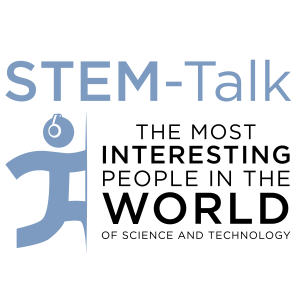
Episode 112: Tim Broderick discusses biotechnology and increasing the biological aptitude and careers of elite special forces
 2020-09-15
2020-09-15
Download
Right click and do "save link as"
Our guest today is Dr. Tim Broderick, the chief science officer here at IHMC. Tim is a surgeon and biomedical scientist who joined IHMC last year.
Tim has had a fascinating career as a researcher, surgeon and aquanaut. He is well-known as a pioneer in laparoscopic, robotic and telerobotic surgery.
He also has led multiple ground, flight and undersea-based biomedical research projects. As a result, he is an honorary NASA flight surgeon and a NOAA undersea saturation diver.
Tim spent four years as a DARPA program manager where he conceived and established five high-impact biotechnology projects that included revolutionary programs focused on precision diagnosis and treatment of military-relevant diseases and injuries. Over the years, he has developed a substantial portfolio of cutting-edge Department of Defense research. In today’s interview, Tim gives an overview of a fascinating project, called Peerless Operator Biologic Aptitude, which he and his colleagues at IHMC are currently working on.
Show notes:
[00:03:09] Dawn opens the interview asking Tim about growing up in in Cincinnati and going to Cincinnati Reds games in the 1970s with his family.
[00:04:59] Ken asks if growing up in the Apollo era and witnessing the moon landing as a child influenced his interest in science and space.
[00:06:16] Tim recounts a story about his father saving someone’s life at church when Tim was a child and how that had a profound impact on him.
[00:07:13] Tim tells another story from his college days when he saved a man who nearly had his arm chopped off by a machete.
[00:11:22] Dawn asks if it is true that as a teenager Tim would regularly dress up as Scooby-Doo.
{00:13:39] Dawn asks if Tim always knew he wanted to be a doctor since he grew up in a family full of doctors.
[00:15:21] Ken asks why Tim decided to attend Xavier University in Cincinnati.
[00:16:41] Dawn mentions that she has rarely heard of someone heading off to college with the idea of double majoring in chemistry and computer science, and asks how that came about.
[00:21:17] Dawn mentions that Tim graduated in four years and in 1986 decided to stay in town for medical school at the University of Cincinnati College of Medicine. Dawn asks what drew him there.
[00:22:58] Ken asks if Tim knew he wanted to become a surgeon when he started med school.
[00:26:37] Dawn asks what lead Tim to go to Richmond, Virginia, for his residency as a surgical resident at the Medical College of Virginia.
[00:28:23] Dawn asks about how Tim’s interest in minimally invasive surgery during his residency, which led to him becoming the director of surgical research at VCU’s Minimally Invasive Surgery Center.
[00:29:32] Ken mentions that while Tim was working at VCU he became a consulting surgeon for telemedicine and robotics for the NASA Medical Informatics Technology Applications Consortium. Ken asks what that work entailed.
[00:32:32] Ken asks about Tim’s early work in laparoscopic robotic and telerobotic surgery.
[00:38:00] Ken asks about how Tim’s experience in remote surgery for astronauts led him to become an aquanaut and a crew member for NASA’s NEEMO 9.
[00:40:24] Dawn mentions that it was Tim’s support that was one of the reasons that Dawn had the chance to join NEEMO as a crew member. She goes on to mention that Tim logged time underwater as a NEEMO aquanaut when he returned to the project several years after NEEMO 9 for NEEMO 12. Tim describes what his research was focused on for that mission.
[00:43:33] Dawn notes the similarities between an operational environment such as NEEMO, spaceflight and the operating room. Dawn asks if Tim’s experiences in the operating room crossed over into his work on the NEEMO mission.
[00:45:08] Tim shares some of his favorite memories from his time underwater with NEEMO.
[00:49:48] Dawn mentions that beginning in the year 2003, Tim spent seven years as a senior scientist and trauma portfol...
view more
More Episodes
012345678910111213141516171819
Create your
podcast in
minutes
- Full-featured podcast site
- Unlimited storage and bandwidth
- Comprehensive podcast stats
- Distribute to Apple Podcasts, Spotify, and more
- Make money with your podcast
It is Free
- Privacy Policy
- Cookie Policy
- Terms of Use
- Consent Preferences
- Copyright © 2015-2024 Podbean.com




